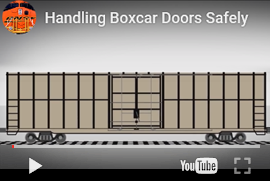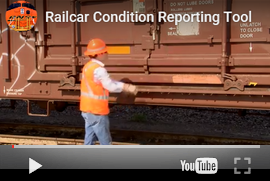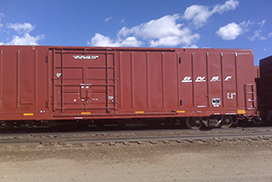Tools and content that have a lock icon next to them require a bnsf.com login id in order to access. If you do not have your bnsf.com login id, register now and get immediate access.
Use our Get a Freight Rate tool to obtain a price for shipping canned and boxed.
Pricing Tools and Resources
Key STCCs (Standard Transportation Commodity Codes)
Key STCCs for canned and boxed (but not limited to):
| STCC |
Description |
STCC |
Description |
| 20331 |
Canned fruit |
20336 |
Tomato paste in bulk bins |
| 20339, 20391, 20995 |
Mixed canned goods |
20471 |
Animal/pet food |
BNSF provides superior customer service and support through our dedicated team of shipping experts and our well-maintained fleet that meets the weight and size needs of the industry. With access to most major canned and boxed production and consumption areas in the Western United States and joint-line access to Eastern Markets, we have the flexibility to get your goods where they need to go.
- Review transit times for canned and boxed shipped using our single car services.
- BNSF provides service for canned and boxed only on designated routes. Find out where BNSF ships.
- Check to see if BNSF serves your destination using our switching guides.
- Customers desiring to ship in unit train service must comply with the Unit Train Operating Guidelines. Please note, in order to take advantage of our Unit Train service, you must own or lease your equipment.
If you are not directly served by a railroad and need delivery by truck, consider using one of our premier transloaders or BNSF Logistics.
Boxcar

This video covers the safe operation of boxcar doors.

This video covers the tools available for customers to report a railcar's condition.
| Specifications Table |
Diagram (50 ft) |
Diagram (60 ft) |
| Inside Length |
50 ft |
60 ft |
| Inside Height |
13 ft |
13 ft |
| Inside Width |
9.6 ft |
9.6 ft |
| Door Type |
Plug |
Sliding and plug |
| Door Width |
10.6 ft to 16 ft |
10.6 ft to 16 ft |
| Lading Capacity |
185,000 to 215,000 lbs |
201,000 to 209,000 lbs |
| Cubic Foot Capacity |
6,100 to 6,250 |
7,500 |
| Plate |
F |
F, G |
** All materials are provided for informational purposes only; BNSF makes no warranty regarding accuracy and shall not be liable for any errors and/or omissions. Materials are subject to change at any time without notice or publication. Please consult with the Equipment Department for the most up-to-date data.
Containers

A container is a weatherproof box designed for bulk shipment of freight. Domestic containers come in 45 feet, 48 feet and 53 feet-long options. Ocean containers come in 20 feet and 40 feet-long options. They are designed for all modes of intermodal transport.
Trailers

A trailer is a weatherproof box with permanent wheels designed for bulk shipment of freight on rail, highway or combination of both. Trailers come in 45 feet, 48 feet and 53 feet-long options.
Insulated Boxcar

| Specifications Table |
Diagram |
| Inside Length |
60 ft |
| Inside Height |
10.6 ft |
| Inside Width |
9 ft to 9.4 ft |
| Door Type |
Plug |
| Door Width |
10.6 ft to 16 ft |
| Lading Capacity |
164,000 to 175,000 lbs |
| Cubic Foot Capacity |
6,000 |
| Plate |
C |
** All materials are provided for informational purposes only; BNSF makes no warranty regarding accuracy and shall not be liable for any errors and/or omissions. Materials are subject to change at any time without notice or publication. Please consult with the Equipment Department for the most up-to-date data.
Private Equipment Guidelines
The following section contains guidelines and information for the use of privately marked equipment where BNSF is the origination line-haul carrier.
- Private rail equipment must meet the Association of American Railroads' (AAR's) Circular OT-5 for Rules Governing the Assignment of Reporting Marks and Mechanical Designations. Privately marked equipment must also be registered via the OT-57 process that is administered by Railinc. For more information, please visit Railinc's Loading Authority (OT-57) web site.
- Private equipment controlling entities are required to manage the flow (pipeline) of empty equipment moving to BNSF origin line haul locations or connecting carrier serving locations to preserve network fluidity.
- BNSF may require private equipment controlling entities to move equipment off-line at their expense to preserve network fluidity.
- Private equipment is subject to charges for both equipment held for loading and unloading and equipment held for purposes other than loading or unloading.
- BNSF's Mechanical Requirements for Private Equipment listed below.
SAFETY IS BNSF'S MAIN PRIORITY
The following is not all inclusive. However, equipment must comply with all of the following key mechanical requirements:
- All interchange freight car owners must subscribe to the AAR Interchange Rules and be listed in FindUs.Rail.
- Cars must comply with and be maintained, by the owner, per the AAR Office and Field Manual Rules.
- All AAR Field Manual Rules (Sections A.1 and A.2 defects along with any component obsolete or prohibited in interchange) must be complied with and equipment must be repaired or replaced prior to placement of the cars on BNSF.
- All cars must have yellow Federal Railroad Administration (FRA) 224 compliant reflectorization with the application date registered in Umler (no grandfathered material allowed).
- Angle cocks located below the coupler as shown in AAR Field Manual Rule 5 Figure 14 are prohibited.
- Greater than 268,000 Pound Gross Rail Load Freight Cars of any car type must meet one of the following criteria:
- Cars are approved by the AAR per Specification S-286 or
- Cars are approved by the AAR per Specification S-259 and the following is met: Cars must be equipped with constant contact side bearings, preferably long travel.
- Cars must be registered with the proper Star Code.
- 286,000 Pound Gross Rail Load Freight Cars of any car type less than 44 feet 11 inches in overall length must have route specifically approved by BNSF due to bridge loading concerns. The following link can assist in route selections: Rail Network Maps.
- Flat Cars of any type and capacity must be equipped with constant contact side bearings. Long travel constant contact side bearings are preferred.
- Covered Hoppers must have outlet gates that seal completely. The sealing member must be maintained in good condition and not allow product to bypass the gaskets/seals and leak onto the ground. All gates must be of a positive lock design with security seal capability.
- Cars equipped with one or more rotary couplers must be equipped with anti-gravity locks on both ends.
- All Cars must meet AAR and FRA Safety Appliance Standards.
- Gondolas and bulkhead flat cars must be equipped with crossover platform and associated safety appliances on both ends.
- Bottom dump coal hopper cars equipped with door line air hose must have this hose in the "low" configuration as to not block the crossover platform.
- Tank cars must be equipped with a Group R "weather resistant" slack adjuster.
Foreign Marked Equipment Guidelines
Foreign marked equipment is defined as equipment having reporting marks of a non-BNSF controlled railroad or equipment that contains non-private marks. Private marks are defined as equipment initials ending with an X, with the exception of TTX owned/controlled equipment.
- Request for assignment of foreign marked equipment should be in accordance with Car Service Rule 16. Requests should be made through your BNSF representative.
- BNSF reserves the right not to use foreign marked equipment when BNSF-controlled equipment is available. If no agreement exists with customers/controlling entities to utilize foreign marked cars, BNSF may refuse to place non-BNSF marked equipment for loading and may return them to the railroad whose marks are stenciled on the cars.
- Prior to securing foreign marked equipment to be loaded at a location where BNSF is the origin line haul carrier, customers/controlling entities must discuss equipment options with their BNSF sales representative.
Loading Origin Guarantees
Shippers have the ability to guarantee equipment supply through BNSF's Loading Origins Guarantee (LOGs) program. Log in to our Customer Portal to find more information.






